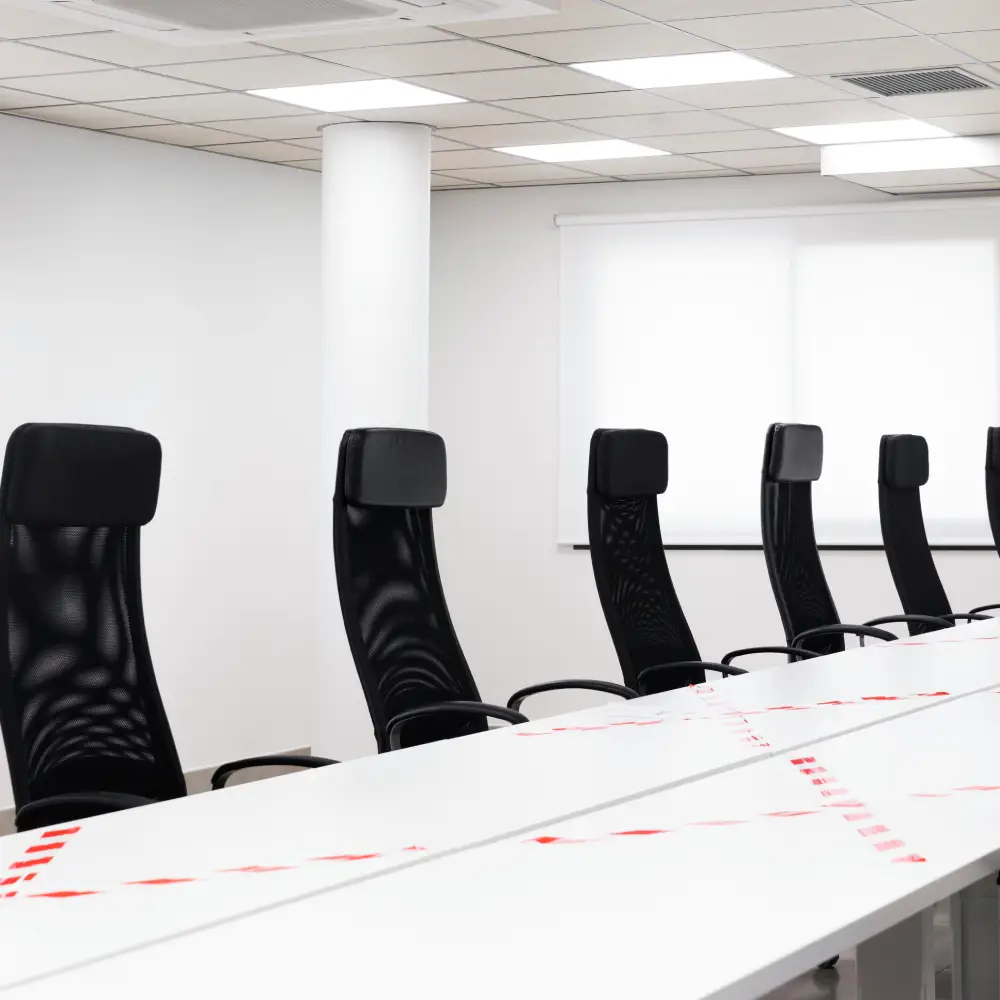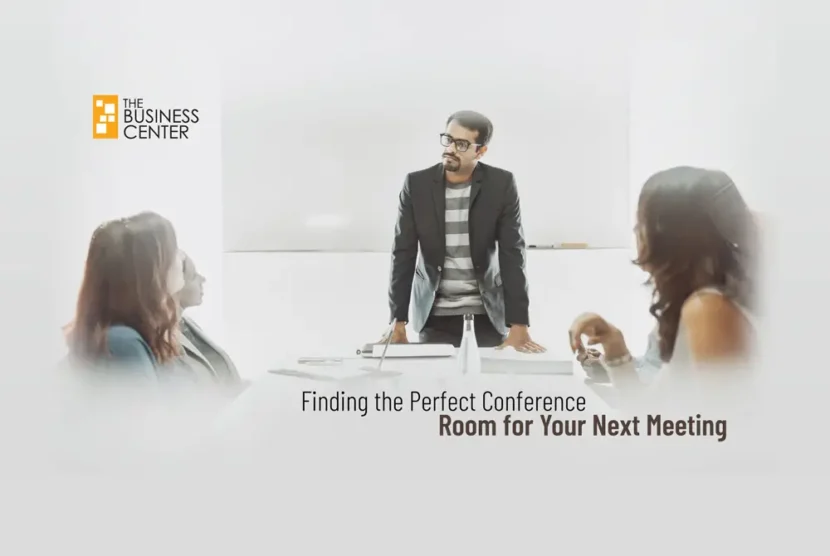1. Pay Attention to Size
Since you will be organizing a meeting, it is important for you to confirm how many attendees will be present, and cross check that with the total number of people the room can hold. The room has to be spacious enough for everyone to be comfortable, but not have too many gaps in between.
For close, one-to-one meetings, look for a room with an oval or a rounded table. This brings people closer, making effective communication more likely.
For medium-sized groups, choose an oval/ rectangular table to enable higher visibility & easier collaboration.
Finally, large auditoriums or conference rooms are best for training sessions, workshops & presentations. There should be a clearly designated stage, podium, and enough seating to encourage participation and engagement.

2. Technology to Support Seamless Connectivity
If you want to survive in today’s fast-paced world, you absolutely must-have technology to facilitate smooth meetings, especially if you’re working with remote participants. When selecting a conference room, check that it is equipped with the tools needed for your meeting; especially if it involves members who will be participating remotely.
A high-quality microphone and camera setup for hybrid meetings. You should look for rooms that have built-in video conferencing systems.
There should be a projector and a large screen for sharing reports, visual materials and reports. It should be checked for compatibility of all your devices.
You will also need a reliable and fast internet service provider to allow effortless connectivity. Make sure you’re using a device that can simultaneously handle multiple projects.
Do you need to put anything down on diagrams or brainstorm for newer ideas, check to see if you have access to whiteboards/ interactive smart boards, and whether they can be connected to stay connected in real-time.
3. Location
When choosing a conference room, you must keep in mind what makes you and your attendees comfortable. A room that is easy to find and centrally located is ideal. Consider the following factors:
- Proximity to the main office: Make sure that the room is near the workspaces of the participants, especially if they need to quickly move from one meeting to another.
- Check the noise levels: Make sure the room is in a quiet & secluded area, away from high-traffic zones, lifts, or leisure/ break rooms. A noisy environment can break concentration.
4. Creating the Perfect Mix of Comfort & Aesthetics
The ambiance of the conference room plays a huge part in the productivity and mood of your meeting. A room that is comfortable and visually appealing will help set a positive tone while encouraging the focus of the attendees.
- Lighting: Natural light is always a bonus, but you should also have the option of dimming the light to reduce screen glare and create an environment that has much more focus.
- Temperature regulation: People can only be productive when the right temperature surrounds them. If the chosen room’s temperature can be regulated, it will enhance the comfort level of the experience.
- Furniture: The furniture should offer enough comfort for long meetings. Adjustable chairs, spacious desks, and comfortable seating will allow you to keep your participants engaged from beginning to the end.
- Decor and Ambiance: A clean and aesthetic environment can help lower stress and boost creativity. The interior and the feel of the room should be strictly professional with a hint of pizzazz.

5. Flexibility and Customizability
Flexibility can play a crucial role in the kind of conference room you select. Look for rooms that can adapt to different needs or be customized for specific sessions.
- Modular Furniture: Switching things up can be a breeze if your room has a modular furniture setup.
- Group Discussion Areas: For larger meetings or workshops, rooms that have space for smaller group discussions can be very useful. This allows your team to collaborate in the same room with extreme ease.
- Adjustable Layouts: Some conference rooms have adjustable seating, allowing you to create different setups based on your requirements.
6. Amenities and Support Services
If you are going to host longer meetings and workshops, you must also provide additional amenities & support services.
- Refreshments: You can choose to have vending machines for coffee, tea, drinks and snacks for attendees to enjoy. You can also hire caterers for on-site lunch or dinner for bigger events.
- On-Site Support: Some coworking spaces provide administrative support to make sure that everything goes smoothly. For complex presentations on projectors, having tech support at hand could simplify matters a lot.
7. Know Your Budget
Cost is a major decision when thinking of which conference room to pick. Prices can differ widely depending on the size, location and amenities in the conference room, so choose wisely.
- Hourly vs. Daily: Some venues charge hourly rates, while others have daily rates. Make sure you ask beforehand for a clarification on the payment schedule to avoid any surprise costs.
- Hidden Costs: Ask clearly about all possible hidden charges, including room rent, taxes, fees for amenities etc to make sure you are aware of all possible costs that you might incur.
Choosing the perfect conference room for your next meeting is about creating an environment where productivity, creativity, and communication can flourish. By considering factors like size, technology, location, comfort, and flexibility, you can ensure that your next meeting goes off effortlessly.
Remember that a well-designed conference room supports your agenda while helping reinforce your company’s professionalism and attention to detail. With the right space, you can set yourself up for success, so that every meeting you host will be productive and memorable, both for you and everyone else.




